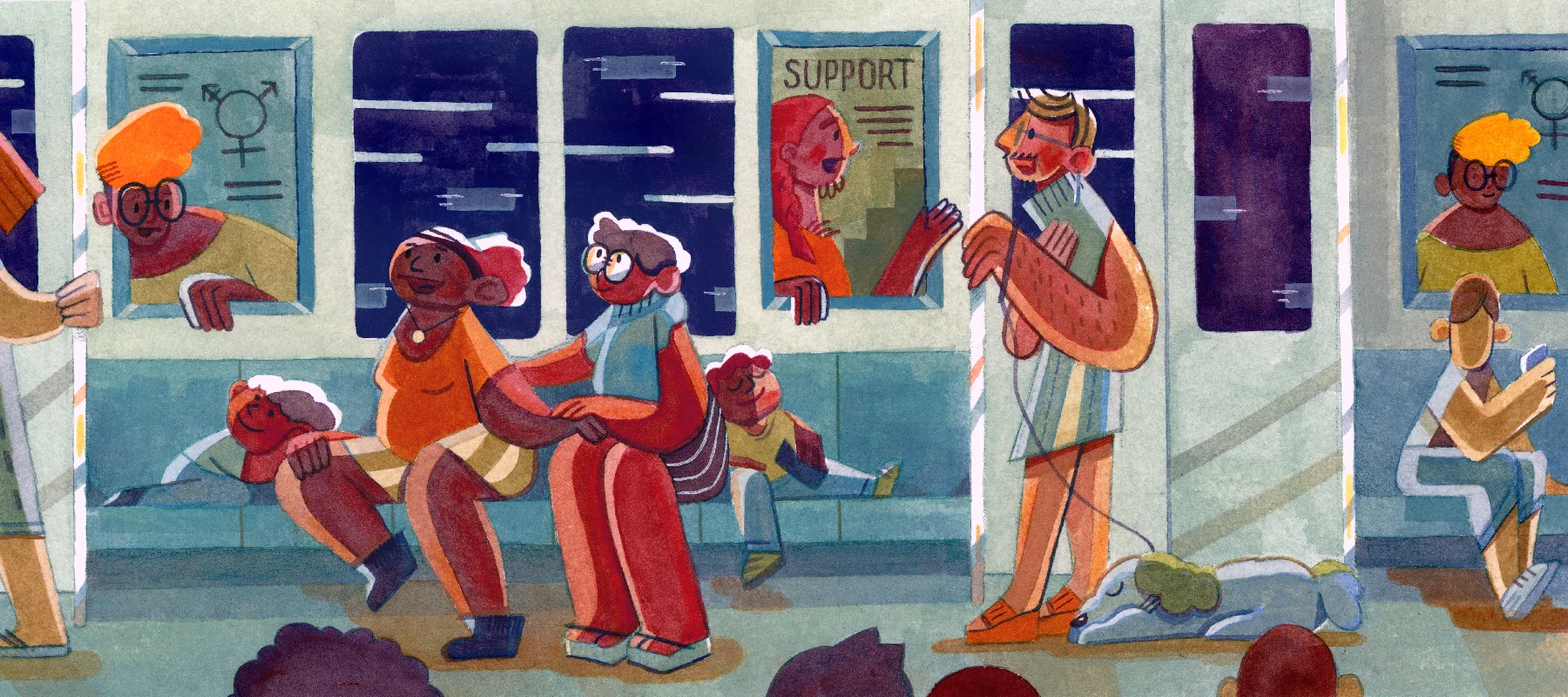Going Past the Rainbow: How brands can more effectively support the LGBTQ community
- 9 June 2021
- ByMitchell Kuga

One of my favorite pastimes every June—along with celebrating my queer elders and taking up more unapologetic space in the world— is laughing at brands pandering to queer people in increasingly harebrained fashion. From Marks and Spencer’s LGBT Sandwich (a BLT with Guacamole) to Trump’s Pride merch, which included a rainbow colored “Make America Great Again” hat, “rainbow capitalism” during Pride month has become the new normal— a shift that speaks to both the queer community’s buying power and the growing desire for brands to appear socially conscious (even ones that actively harm the LGBTQ community). But there are many meaningful ways for companies to support queer communities that go beyond mere lip service.
“Turning your logo to a rainbow for the month of June is not enough,” says RaShawn Hawkins, Deputy Director of the Workplace Equality Program at the Human Rights Campaign (HRC). “We appreciate that, and we appreciate you supporting local Pride organizations and showing up in the parades and buying vendor spaces and letting the community at large know that you're welcoming—but Pride and partnership with the community is 365, so what else are you doing?”
Big Cartel spoke to Hawkins, whose department oversees HRC’s Corporate Equality Index, about how brands can more effectively support the LGBTQ community year round.
Start At Home
Before proclaiming your support of the LGBTQ community, ask yourself: are the LGBTQ people in your company being protected and affirmed at work? Hawkins stressed that fostering proper pronoun usage and chosen name recognition is a good place to start, particularly for trans and nonbinary workers. She recommends doing so via your company’s intake and onboarding systems. “When I join an organization and fill out all that paperwork in my new hire orientation, how is that information going to feed into the rest of my experience?” says Hawkins. “Will my chosen name and my pronouns translate into my email, into a chat function, into the way I present in any kind of virtual communication and in person?” Other effective cultural practices include adding pronouns to email signatures and introductions during meetings (for example: “I’m Mitchell Kuga, and I use he/him pronouns.”)
Hawkins says it’s also important to avoid using gendered language in job descriptions, which has the tendency to deter LGBTQ candidates from applying (words like “competitive” and “outspoken” are coded as male; “collaborative” and “compassionate” as female). “That can be incredibly off-putting,” she says. Other barriers to entry include not providing healthcare, especially trans-affirming care for those who are transitioning. “It's nice if you'll greet me with a smile and allow me to put a rainbow flag on my desk, but if you don't have things within your organization that support my life outside of what I do for you eight hours a day then that's not really inclusive. As a business, you want to make sure that you're not excluding anybody and losing potential quality candidates because you don't have healthcare.”
Outreach with Intersectionality
Once you establish inclusive work policies, how do you show up in the community? For those who don’t know where to start, Hawkins recommends reaching out to your local LGBT Chamber of Commerce and Pride Foundation, who tend to have working relationships with LGBTQ nonprofits in the area, as well as a calendar of events that extend beyond Pride month. (If you have them, leaning into your queer employee resource groups could also lead to connections with local organizations). Each city and community has different needs and your approach to engagement will also differ depending on the size of your company. “For small to medium businesses like local bookstores and coffee shops, how does the community know that you're a safe and affirming space?” says Hawkins, noting that displaying rainbow stickers and Pride flags, while not the end all be all, are a good place to start.
For bigger brands, she stresses using your platforms on social media and beyond to elevate LGBTQ stories throughout the year— and not just the stories of white gay cis men. “Think of the intersectional work of our community. During Asian American Pacific Islander Heritage Month there are LGBTQ members that intersect with that identity; are you uplifting and elevating those experiences as well? The same with Black History Month and Women's History Month. Don't just do the logo change for the month. Do the internal work within your organization and do the outreach work in the communities that you serve: that's how you get around performative support.”
Market Authentically
If your company does produce a Pride campaign, make sure it has a point of view (turning a product or logo rainbow colored is not a point of view), is well-researched (this usually means a queer person should lead the campaign), and that the queer people you’re spotlighting are properly compensated. Proceeds from Pride-specific merchandise should benefit a LGBTQ initiative or nonprofit, and if it’s a percentage, be upfront about how much.
Again, intersectionality is key, as is authenticity— “There's a lot of letters within that acronym,” says Hawkins. “If everyone is not represented we're all not equal. If you just rebrand yourself for the month, but we know that you have a history of not being affirming, that's a red flag. Especially in the world of the internet, we have your archives,” she says. “If this is your first time stepping out, be authentic about that. Don’t present that you've been a pillar in the community if you're not.”
Do Your Homework
It’s okay if you don’t know something! Shifts in LGBTQ culture, language, and symbols (did you know there are over twenty different Pride flags?) happen quickly, so staying up-to-date means doing your research, being curious, and listening to people’s stories and concerns. There are resources available on HRC’s website, and the nonprofit also offers inclusivity training to businesses in all fifty states, tailored to each company’s specific needs. “We offer the ability to have a discussion and meet you where you're at, and to give you some guidance on how you can incorporate these types of training and best practices within your organization,” says Hawkins. “It's not a cookie cutter approach to every workplace.”
Article header image created by illustrator Yuko Okabe.
9 June 2021
Words by:Mitchell Kuga
Tags
- Share

